Every dog in the world has its unique intricacies that make owning, training, and rearing it special. A whippet’s progression from puppy to adult, much like any other dog’s, is full of exciting changes, an ornery “toddler” stage, and some special considerations for training, diet, and exercise.
AZ Animals interviewed Dr. Sara Ochoa, a vet contributor to Hound Games and a graduate of St. George’s University with a Doctorate in Veterinary Medicine, in specific regards to training.
Keep reading to discover how a whippet’s growth progression will look in the first two or so years of their lives.
Breed Summary
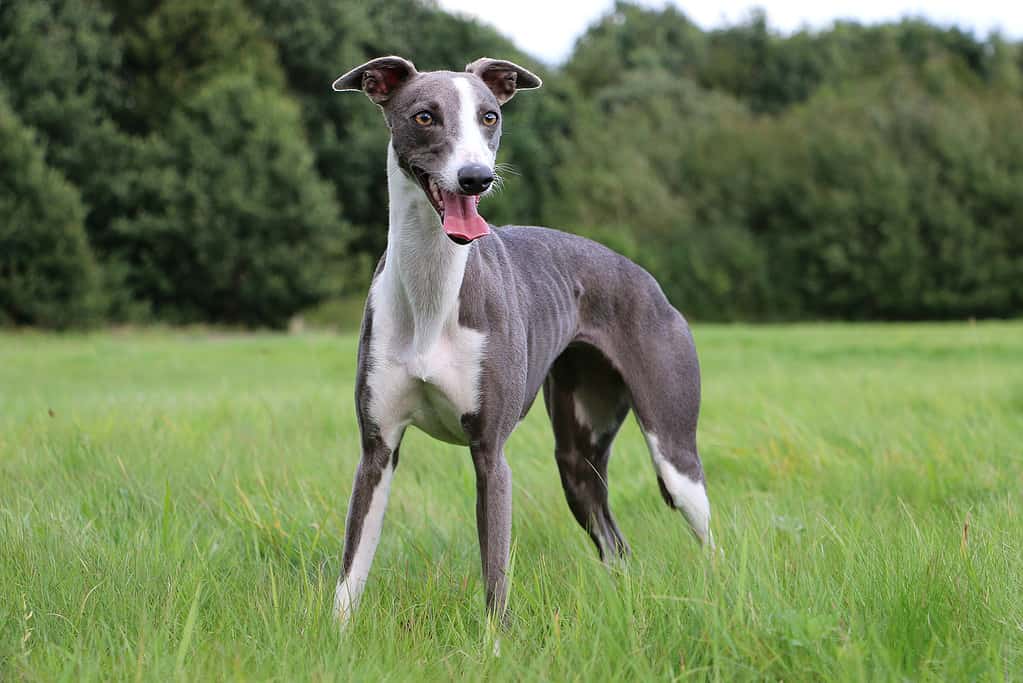
Dog owners often compare the look of a whippet to a greyhound.
©BiancaGrueneberg/iStock via Getty Images
Nicknamed the “poor man’s racehorse,” the whippet is a lightning-fast breed, not unlike the similar-looking greyhound. As a sighthound, whippets love to chase things. They’re sleek, skinny, and sweet dogs with big eyes and a bigger heart.
Even with their love of running and chasing, whippets make great apartment dogs. They’re comfortable to spend most of their day relaxing on the couch as long as they get the exercise they need to stay healthy.
Whippet Growth and Weight Chart by Age
Most whippets will weigh between .5 and one pound as a newborn pup and grow steadily from there. While individuals may vary, the chart below provides a general idea of what to expect.
| Age | Male Weight | Female Weight |
|---|---|---|
| Birth | 2.5 pounds | 1.5 pounds |
| 1 Month | 6.2 pounds | 5.2 pounds |
| 6 Weeks | 7.7 pounds | 6.7 pounds |
| 2 Months | 9.3 pounds | 8.3 pounds |
| 3 Months | 11.1 pounds | 10.1 pounds |
| 4 Months | 12.9 pounds | 11.9 pounds |
| 5 Months | 14.7 pounds | 13.7 pounds |
| 6 Months | 16.3 pounds | 15.3 pounds |
| 7 Months | 18.6 pounds | 16.6 pounds |
| 8 Months | 20.8 pounds | 17.8 pounds |
| 9 Months | 21.7 pounds | 18.7 pounds |
| 10 Months | 23.4 pounds | 19.4 pounds |
| 11 Months | 24.9 pounds | 19.9 pounds |
| 12 Months | 25.6 pounds | 20.6 pounds |
| 2 Years | 28.1 pounds | 25.1 pounds |
When Will My Whippet Stop Growing?
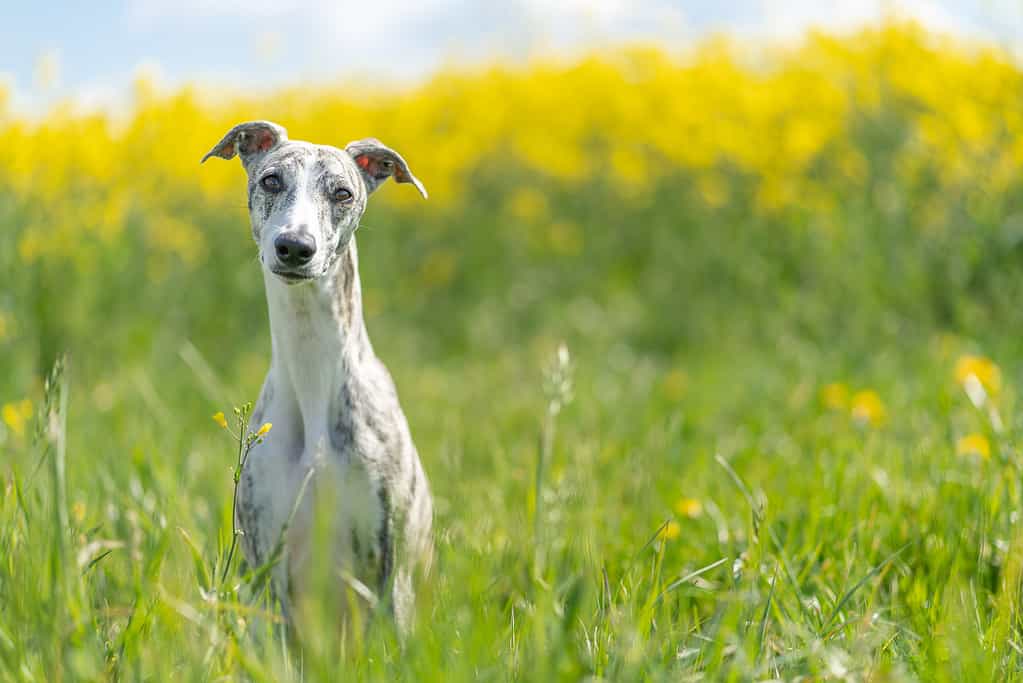
Around eight months old, your whippet will begin to stop its growing.
©Frank Günther/iStock via Getty Images
Across the board, the age at which whippets reach maturity is a mixed bag. Some owners cite that their whippet reached maturity as early as six or eight months old while others reported it taking a year or more. Based on research, the average whippet’s growth typically slows down between eight and 10 months old, with most breed individuals reaching physical and genetic maturity not long after their first birthday.
Whippet puppies under three months old should eat somewhere around one cup of food a day. As they grow, you can increase them based on the feeding chart your chosen food brand recommends. Remember to space meals out, feed on a schedule, and always supply an endless well of fresh water for your whippet.
Regular check-ups with your trusted veterinarian will ensure your whippet grows at a healthy rate. During the first year of life, your whippet should go to the vet every few months. Once they’re cleared for their shots and receive a clean bill of health, they can go to the vet once a year and whenever an issue arises.
How Big Will My Whippet Be When It’s Fully Grown?
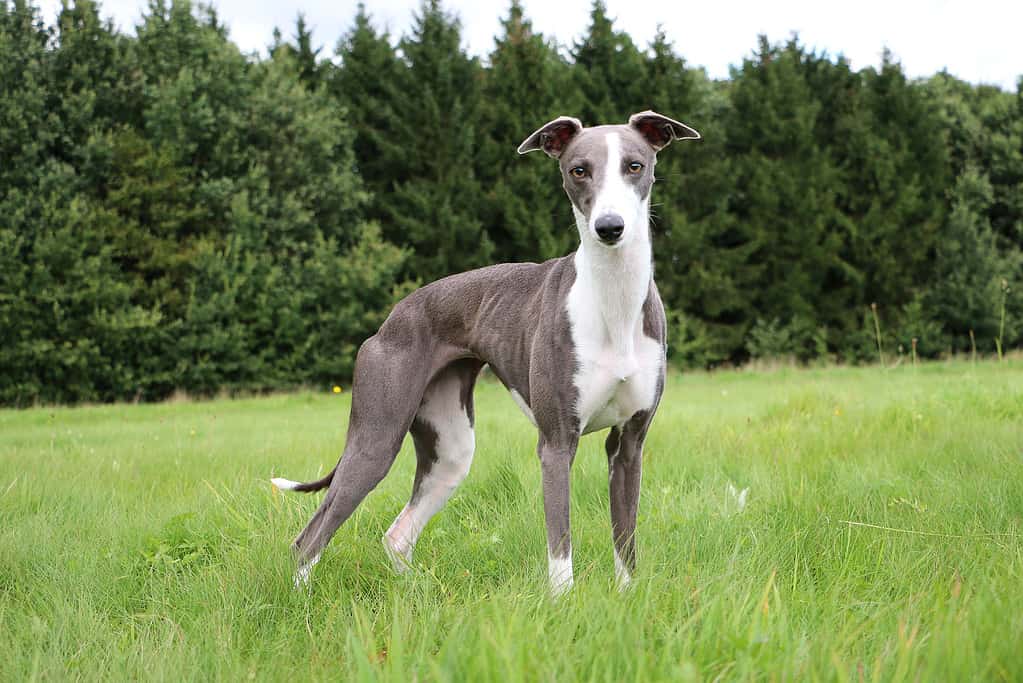
Whippets only grow to 40 pounds at most.
©BiancaGrueneberg/iStock via Getty Images
On average, whippets grow to become an average-sized breed. They’ll weigh anywhere between 25 and 40 pounds at full maturity. While genetics and diet can create outliers, healthy whippets should stay within this range as a breed standard and extend the longevity of their lifespan.
Male individuals of the whippet breed usually stand taller than the females. Males will range in height between 19 and 22 inches while females are an inch shorter, growing between 18 and 21 inches at full maturity.
When Should My Whippet Be Spayed or Neutered?
The American Animal Hospital Association holds that owners of dogs under 45 pounds at full maturity — which includes the whippet — should spay or neuter their dogs on the earlier side. For female whippets, that means getting spayed around five or six months old, which is before her first heat cycle. For male whippets, neutering can happen any time after the six-month mark.
Fixing your whippet reduces your risk of developing reproductive organ cancer. It also limits pet overpopulation, reduces unwanted behaviors, and can save money on veterinary bills for health complications that occur without the spay/neuter.
When Should My Whippet Be House Broken?
Whippets remain generally clean dogs, meaning they don’t want to rest or play where they’ve gone to the bathroom. As such, you can potty train your whippet in as little as a few weeks so that they’re fully housebroken by four months old. When potty training your whippet, remember a few things:
- Puppies have accidents. It’s not their fault.
- It’s your responsibility to teach them bladder control.
- Your whippet will need to go out a lot when they’re young.
- Making potty time all business ensures your whippet understands that playtime and potty time differ.
Potty training a whippet comes down to consistency and patience. Take them out every time after they sleep, eat, nap, drink, or play. Yes, you will feel like a “revolving door” for the first few weeks. However, keeping to this routine establishes great habits and helps your whippet understand their body’s needs and urges to potty.
When accidents happen, never punish your whippet. Instead, act like nothing happened, take them outside to finish (if you’ve caught them in the act), and clean up the mess completely to remove all traces of ammonia that could stay around and invite another accident.
When Should My Whippet Stop Eating Puppy Food?

Whippets can transition to adult food around nine months if their vet allows.
©Frank Günther/iStock via Getty Images
Usually, your vet will let you know when your whippet can transfer over from puppy food to adult food. This isn’t an errant switch of flavors; the nutrients in puppy food versus adult food have different ingredients that your dog needs at specific life stages. Switching them too early or too late can impact their growth and development.
When you do change food, do it slowly. Changing the food “cold turkey” doesn’t give your puppy’s stomach bacteria time to evolve and can cause them gastrointestinal distress.
Most whippet owners switch their pups over to adult food around the nine or 10-month mark. Again, consult your veterinarian on your whippet’s growth progression to decipher what the best time is.
When Will My Whippet Start Losing Teeth?
Teething in puppies, including whippets, occurs around four to six months. Depending on your dog’s activity level — like playing with other dogs or animals in the house or chewing intensely on toys — they may lose their teeth earlier rather than later.
The teething process is painful for most puppies. After all, they’re growing eight new teeth. A frozen toy, dog-friendly plushies soaked in chicken broth and frozen, and vet-recommended oral gels can offer your whippet some comfort as they lose and grow new teeth.
Some whippets have dental issues in higher percentages than other dogs. Thanks to the slim shape of their mouths, teeth can become overcrowded and cause pain when they grow. Keep an eye on your whippet’s mouth and consult your vet if you see signs of an issue.
When Should I Start Training My Whippet?

According to Dr. Ochoa, you can start training as early as three weeks.
©Wirestock/iStock via Getty Images
Whippets are wicked smart and you can start their training almost immediately when you get home with them.
The first types of training you’ll want to start are crate training and housebreaking. This establishes great habits and prevents behavioral issues down the road. As you work with your whippet to confidently be out of their crate or pen without having an accident, you can focus on obedience training as well.
“I always advise owners to start training early when Whippets are at their most impressionable age of three to 12 weeks,” said Dr. Ochoa. “Exposing the pup to a variety of sights, sounds, and encounters helps build confidence and emotional stability. But you do need a gentle yet firm hand. Whippets will gleefully try to wrap you around their little paw if you let them!”
Obedience training remains important for owners who want their whippet off-leash. As one of the fastest dog breeds in the world, running after a whippet once it disconnects from its leash is a fool’s errand. Instead, you should focus on recall and “leave it” commands to ensure your whippet’s safety before attempting off-leash training.
What Cues Should I Teach My Whippet First?
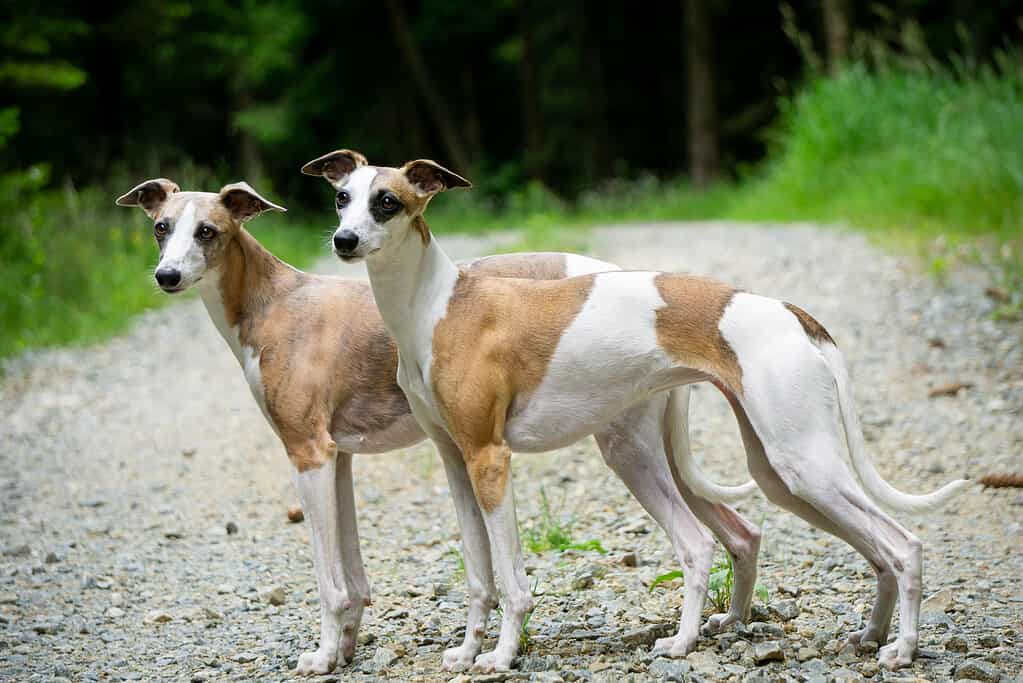
Cues like “come” and “stay” can save your whippet’s life.
©Nadja Huebner/iStock via Getty Images
Among the most essential cues to teach your whippet include “sit,” “stay,” and “come.” These three commands or cues serve as the building blocks of training every other command. Sit acts as the precursor to commands like “lay,” “paw,” “high five,” and more. “Stay” keeps your whippet safely in place before their release word allows them to enter or exit a situation. “Come” is the most basic form of recall that gets your whippet back to your side, no matter what environmental or situational distractions occur.
When you begin training, remember to have patience with your puppy. Positive reinforcement is the best way to train any dog.
When Will My Whippet Calm Down?
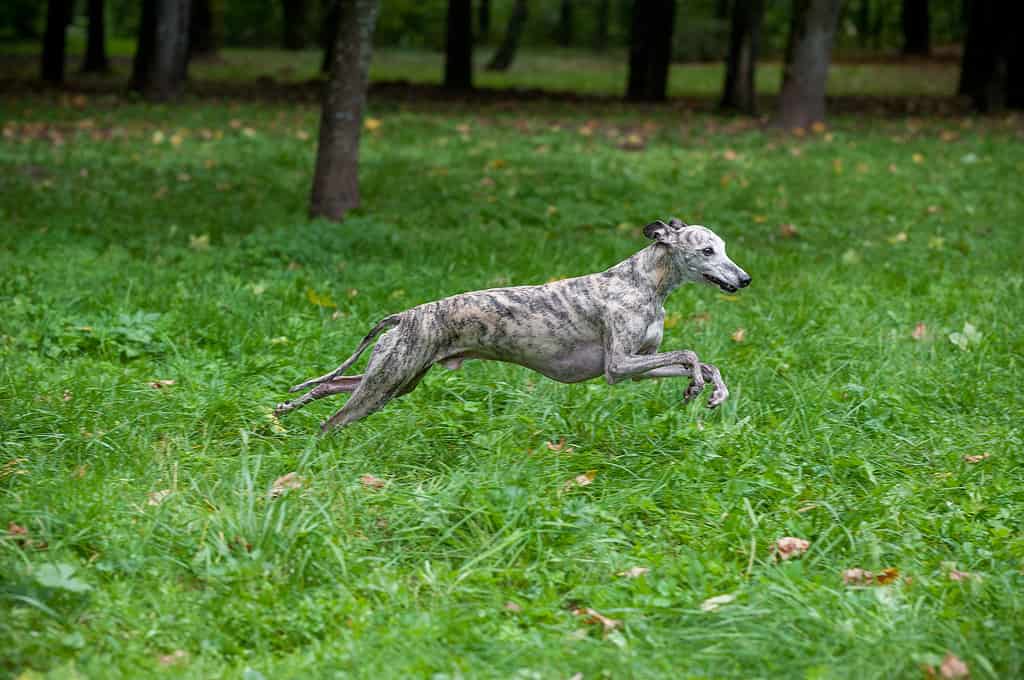
Whippets will become destructive if not properly exercised.
©Mindaugas Dulinskas/iStock via Getty Images
Whippets are generally calm dogs that save most of their energy for short bursts of excitement outside during their sprinting sessions. When it comes to general puppy behavior, however, the whippet will most likely calm down after a year or so. Even though smaller dogs mature faster than larger dogs, many breeds retain their “puppy” personality up to two years after they’re born.
While the average age for whippets to calm down is about one year, this can vary widely by individual dog, lifestyle factors, and even genetics.
Sometimes owners see destructive or attention-seeking behaviors as puppy energy when, in fact, it stems from a behavioral issue or problem not being met. If your whippet constantly howls, whimpers, or whines for hours when you or your partner leave the house, your whippet might suffer from separation anxiety. If your whippet is housebroken but has accidents in the house — and they’re becoming destructive — they may be bored. Try spending more time with them, giving them more affection, taking them on more walks, and/or giving them mentally stimulating toys.
Each dog in a breed grows up differently, so consistent training and socialization remain important to a well-balanced personality.
Common Health Issues Your Whippet Might Experience
Whippets have more health problems than you may think, but they’re not unhealthy dogs. The main issue for the whippet breed is their weight.
Whippets’ slight frame cannot carry excessive weight. Other dogs with ribs showing inspire feelings of sadness and thoughts of malnutrition — but whippets at full maturity should have two to four visible vertebrae.
It’s essential to stay on top of your whippet’s diet and exercise to balance what they’re putting into their body with what they’re expending on their runs.
As your whippet ages, it may develop one or more of the common “old dog” diseases like heart failure, cataracts or other eye problems, hair loss, and dental diseases.
Pictures of Whippet as Puppies
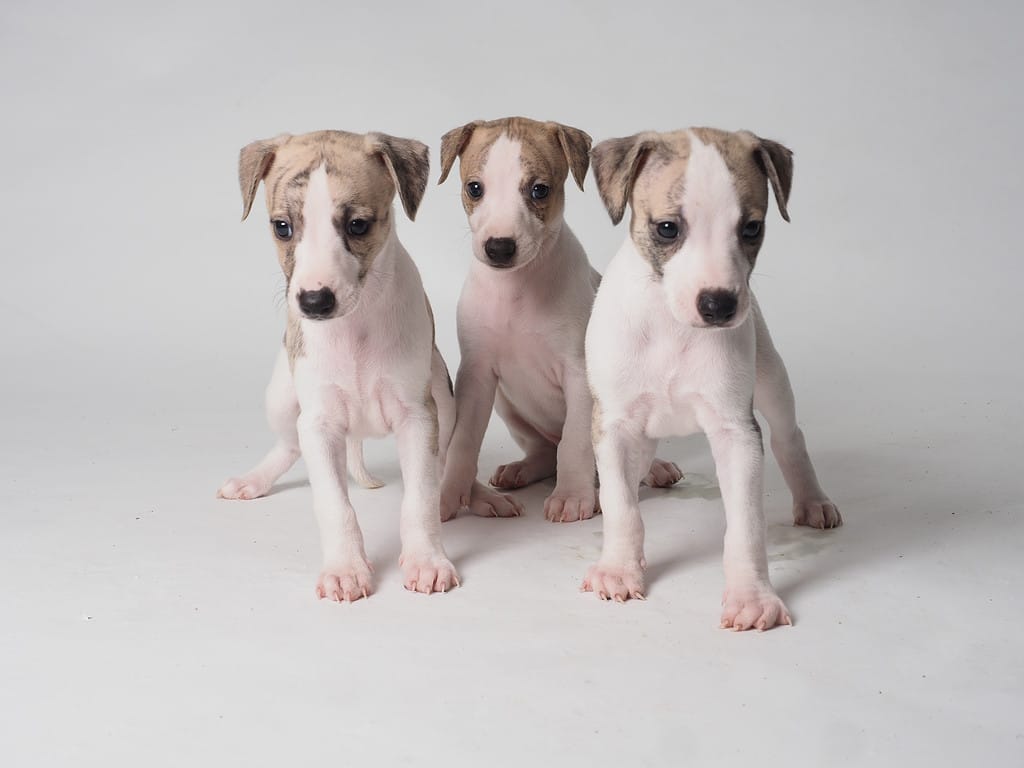
Whippet litters average around six pups.
©marcelinopozo/iStock via Getty Images
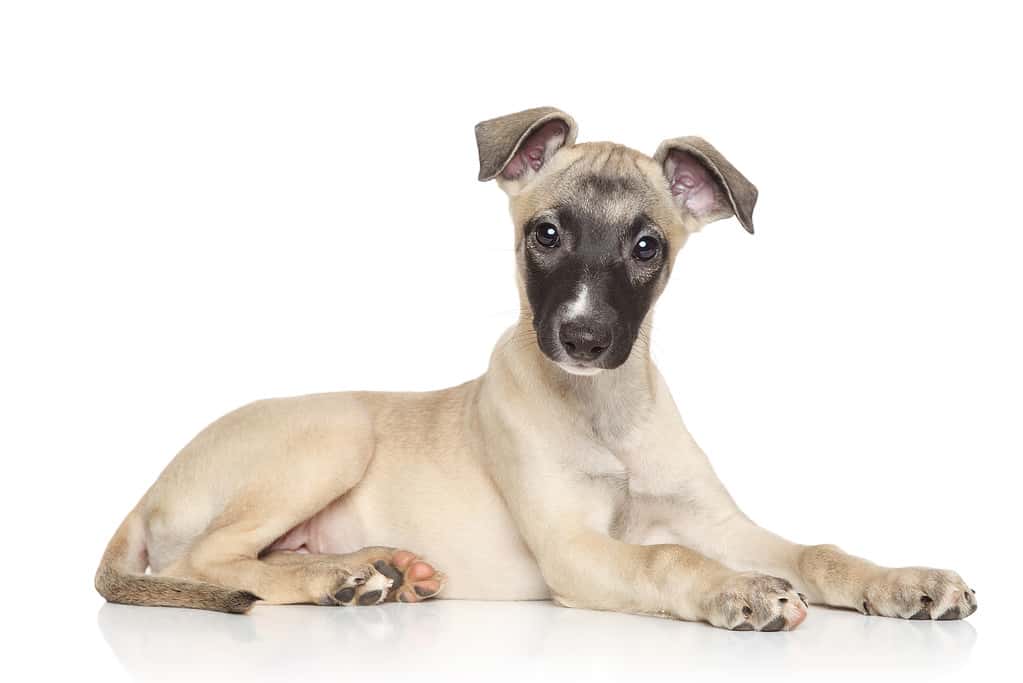
When born, whippets are only a few pounds heavy.
©fotojagodka/iStock via Getty Images
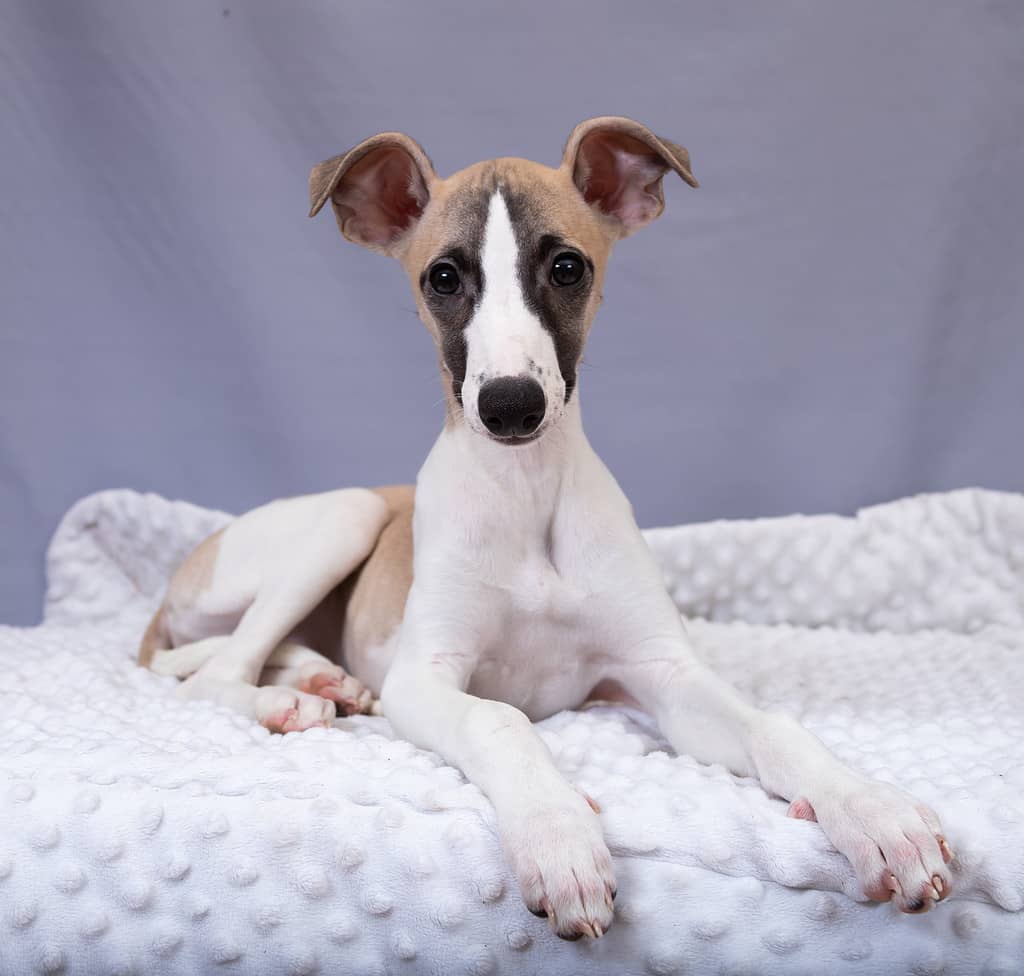
Whippet puppies will sometimes get cold, so make sure you have blankets in the winter.
©Viktoria Koval/iStock via Getty Images
Pictures of Whippet at 6 Months

Though they need lots of exercise, whippets will happily lounge at home after a run.
©Viktoria Koval/iStock via Getty Images
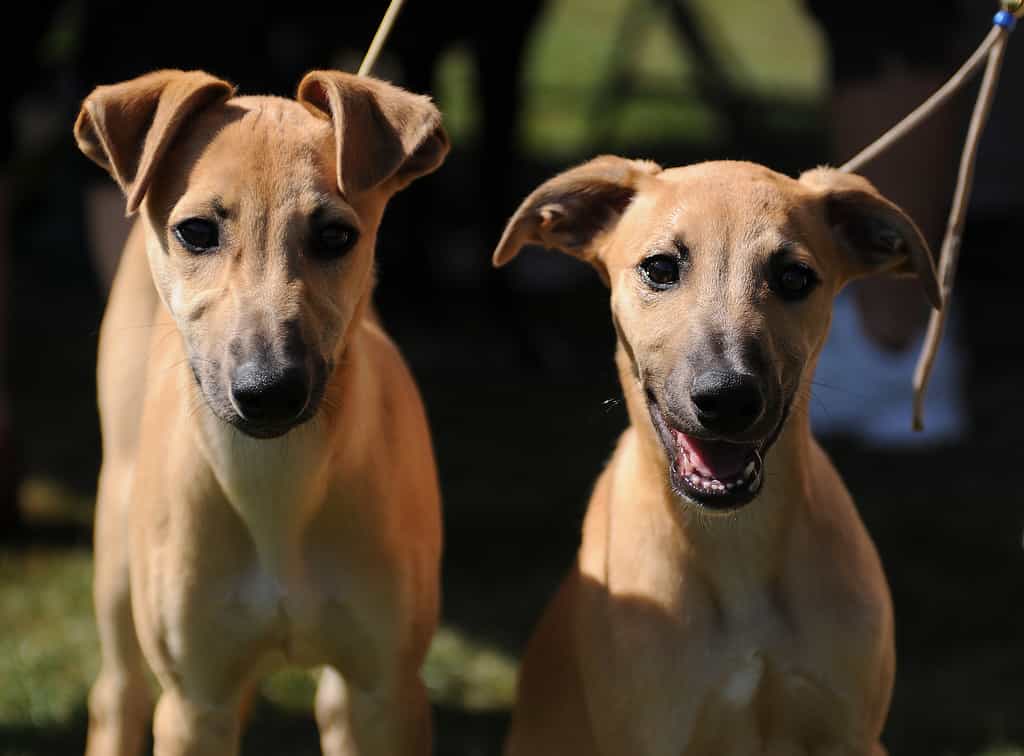
Whippets are great family dogs.
©Winky / CC BY 2.0 – License
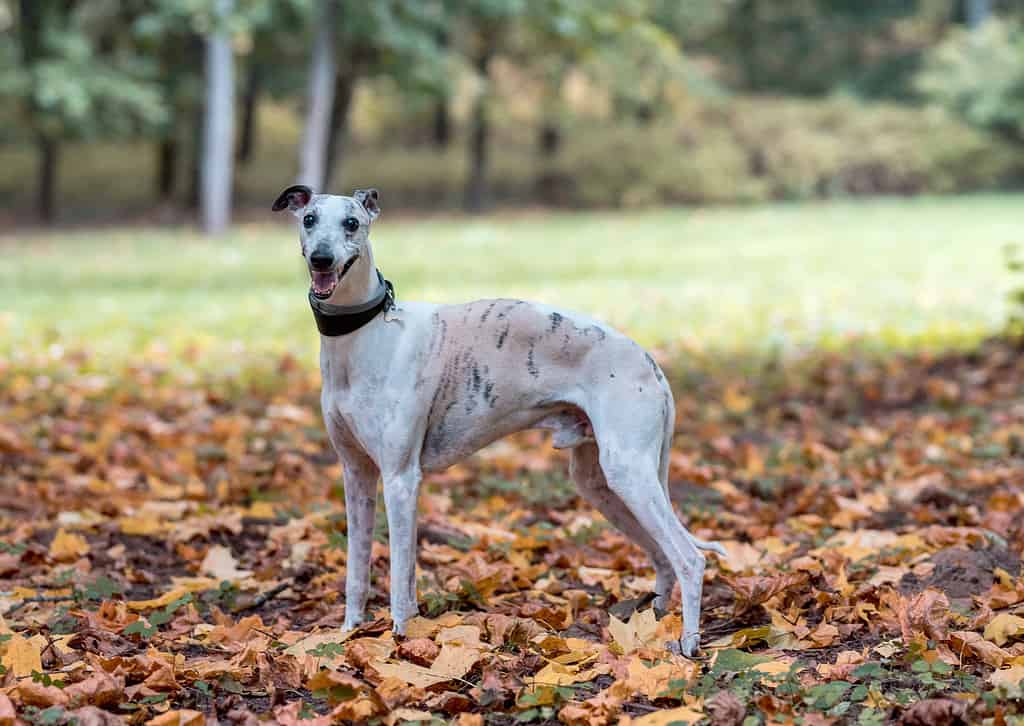
Young whippets need lots of room to stretch their legs.
©Mindaugas Dulinskas/iStock via Getty Images
Pictures of Fully Grown Whippet
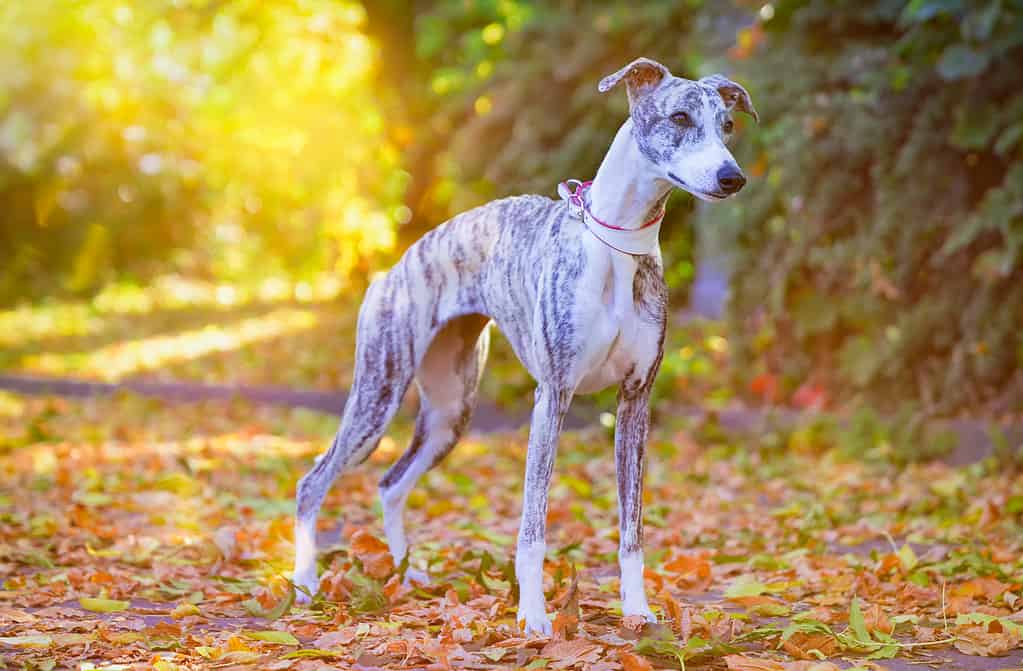
When training your whippet for off-leash play, ensure they are perfect at recall.
©Frank Günther/iStock via Getty Images

Whippets have lanky, lean bodies.
©eAlisa/iStock via Getty Images

Brindle is one of many colorings whippets come in.
©BiancaGrueneberg/iStock via Getty Images
Whippet Wonders
Adopting a whippet as a family pet is a great decision. They are loving, sweet, low-maintenance dogs you can train pretty easily. They rarely bark and do well in both single-family homes with large backyards and apartment complexes. Despite some mischievous tendencies in puppyhood, whippets, on average, like to listen to their owner and remain relatively calm in the home.
The photo featured at the top of this post is © WhippieGamer / CC BY-SA 4.0 – License / Original
Ready to discover the top 10 cutest dog breeds in the entire world?
How about the fastest dogs, the largest dogs and those that are -- quite frankly -- just the kindest dogs on the planet? Each day, AZ Animals sends out lists just like this to our thousands of email subscribers. And the best part? It's FREE. Join today by entering your email below.
Thank you for reading! Have some feedback for us? Contact the AZ Animals editorial team.






